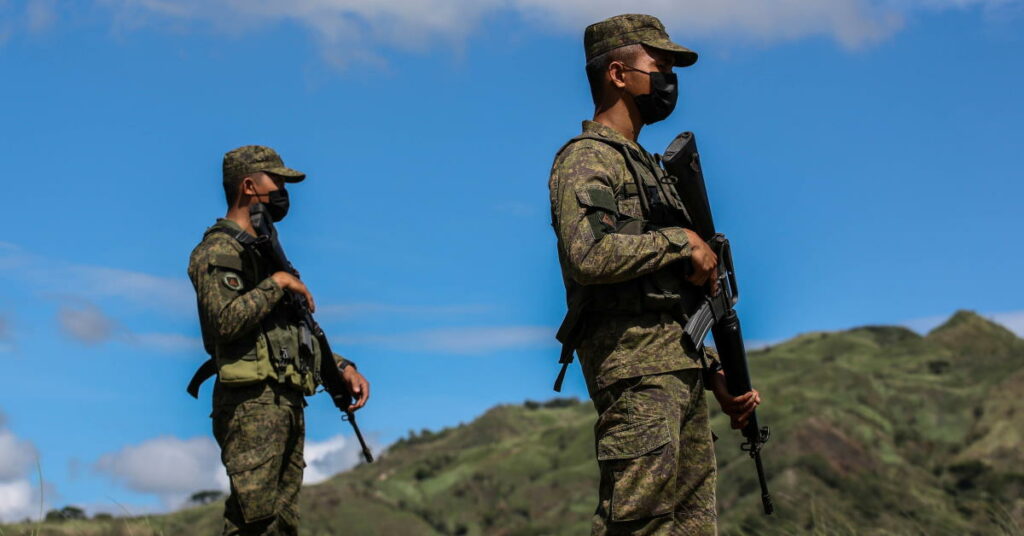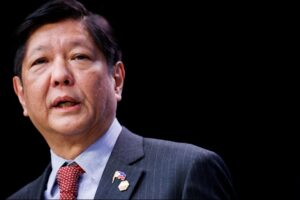
It is interesting that a day before the commencement of the Balikatan Exercises 2022, a report came out which was sensationalized to a considerable degree by the mainstream media about the “close distance manoeuvring” by a China Coast Guard vessel towards a Philippine Coast Guard ship patrolling the Scarborough Shoal in the West Philippines Sea on 2 March, 2022.
The timing is quite interesting and thought-provoking. The report came out around 27 March, the Balikatan Exercises this year commenced on 28 March, 2022, and the said “near-collision” between the two coast guard vessels happened on 2 March, 2022. Thus, it begs to ask why the late reporting? Why was it reported a day before the Balikatan Exercises 2022?
Then after a few days, while the Balikatan Exercises 2022 between the armed forces of the Philippines and the United States (US) were ongoing, former retired Supreme Court Senior Associate Justice Antonio Carpio called for the need to preposition American weapons and military equipment in the country for defensive purposes amid Manila’s continuing sea dispute with Beijing.
“If you don’t prepare for an invasion, then you will be invaded,” Carpio said.
Once again, the likes of Carpio have attempted to resurrect the “China Threat Rhetoric” and the fearmongering of a Chinese invasion of the Philippines, which is not only a product of Carpio’s figment of imagination and delusion but a far-fetched, and exaggerated way of describing the recent incident in the South China Sea (SCS).
Hindsight And Perspective
In retrospect, to justify the need to continue with the Mutual Defense Treaty (MDT), the Enhanced Defense Cooperation Agreement (EDCA), and the Visiting Forces Agreement (VFA), treaties that make possible the Balikatan military exercises between the Philippines and the US, using the exaggerated “China threat” rhetoric is quite misleading and deceptive. This is tantamount to veering away from legitimate questions and issues surrounding the MDT since its inception.
The notion of an aggressive Chinese navy prowling the Western Pacific or the SCS, which according to them, is threatening the sea lanes and maritime territorial integrity of other claimant-states like the Philippines, is again a far-fetched and misplaced concern that is at best, imaginary.
China’s fundamental military doctrine and principles won’t allow it to attack any country unless attacked first. China will not attack the Philippines despite differences over the SCS. But if the Philippines is used as a launchpad to attack China militarily, that’s a different story altogether.
Though it is quite true that in some instances, skirmishes happen among and between the claimant states in the disputed waters of the SCS, the point of the matter is that these incidents happen at various times among various parties. They have been quite common ever since the SCS became a contested area. Hence, these minor incidents and skirmishes will likely happen from time to time. That’s a reality that all parties to the SCS dispute are confronted with, including the Philippines and China.
However, the most important thing is that no serious military confrontations tantamount to war or a major conflict thus far have happened. This is where the importance of the Code of Conduct (COC) comes into play as a mechanism for peaceful resolution of the dispute.
Also, the deepening of diplomatic and bilateral relations between China and the rest of the claimant countries, including the Philippines, at all levels and the pursuance of multilateralism within the ambit of the Association of Southeast Asian Nations (ASEAN) matter the most in bridging understanding and confidence between countries in the dispute to avoid both, minor and major conflicts in the contested waters of the SCS.
Hence, exaggerating the situation in the SCS and blowing minor skirmishes or incidents between China and the Philippines in the disputed SCS out of proportion is a deceitful way of justifying the need for the MDT to continue even though the treaty is somewhat outdated and biased towards American strategic interests as opposed to the national security and interests of the Philippines.
The original rationale behind the crafting of the MDT was to guard against a rearmed Japan after World War II, with the Soviet Union as the convenient secondary threat because of the Cold War. But such threats are gone now.
Likewise, because of the MDT, the Philippines was made to participate in American conflicts, including World War II (1941-1945); the Korean War (1950-1953); the Vietnam War (1964-1975); the Persian Gulf War (1990-1991); and the Iraq War (2003-2004), even though the Philippines is not directly party to these wars/conflicts.
Thus, the Philippines should seriously consider the abrogation of the lopsided MDT, VFA, and EDCA unless the skewed provisions of these agreements and treaties are revised to more reciprocal terms and conditions and compensation paid to the Philippines by the US government.
Maintaining the VFA, EDCA, or even the MDT is an anti-thesis to the Philippines’ pursuit of an “independent foreign policy and non-aligned stance”. These agreements are symbols of US domination in the country, reminders of a colonial-era long gone and the interventionalist agenda of the US.
The continuous presence of military forces in the country is a remnant of colonialism that Filipinos should put an end to. As Senator Claro M Recto said, the Philippines needs a foreign policy based on its national interests and security and not those of the US or any other country.
After the expiration in 1991 of the Agreement between the Republic of the Philippines and the United States of America concerning military bases, foreign military bases, troops, or facilities shall not be allowed in the Philippines except under a treaty duly concurred by the Senate and, when Congress so requires, ratified by a majority of the votes cast by the people in a national referendum held for that purpose, and recognized as a treaty by the other contracting State.”
The 1987 Constitution of the Republic of the Philippines, ratified in a nationwide plebiscite on 8 February, 1987, effectively ended any military cooperation via American military presence in the Philippines under the RP-US Mutual Defense Treaty of 1951.
From a constitutional standpoint alone, the MDT should have been rescinded as early as the Cory Aquino administration in the same manner that the EDCA should have been ratified by the Senate or repealed because it also violated the constitution in many respects.
Conclusion
The MDT, EDCA, and VFA are treaties that have long served and assured the US of a military foothold in the Philippines, which in many respects substantially framed the Philippines within the ambit of the US.
These treaties need to be revisited/reviewed thoroughly by the next administration if we want to have more leverage in dealing with the geopolitical realities/tensions and the manoeuvrings of superpowers within our region (Indo-Pacific) and beyond. Not doing so will put us in a flatfooted position. These treaties are like umbilical cords that need to be cut.
Amid all the geopolitical realities surrounding the Philippines, the country has to be more prudent in how it positions itself.
On the issue of the Philippines opening its military facilities to the US, the country practically becomes a US strategic security and defense outpost and the launchpad for its security and military operations in the Indo-Pacific region, especially if a war or military confrontation in the Indo-Pacific region breaks out between the superpowers.
At the moment, there are US bases across the Philippines, namely Subic Bay Naval Base, Basa Air Base, Fort Magsaysay, Antonio Bautista Air Base, Mactan-Benito Ebuen Air Base, and Lumbia Air Base, which are located for US purposes. They’re near or on the South China Sea, significantly enhancing the US military’s ability to challenge Beijing there.
If these EDCA bases are further opened to US military assets and forces, and if a war breaks out in the region between the superpowers, Washington would definitely rely more heavily on these EDCA bases than its other more distant bases in Guam; Okinawa; mainland Japan; Darwin, Australia; Hawaii; and elsewhere. This is one of the reasons why the US wants to preserve the MDT, EDCA, and the VFA.
On the other hand, if, in any case, war or military conflict breaks out in the Indo-Pacific region between the superpowers, the Philippines, more specifically, these EDCA bases will become prime targets for retaliation or attacks because of US military assets and the presence of boots on the ground.
One has to take cognizance of the fact that without the Philippines as a military and security strategic outpost in the Indo-Pacific region, the US will push its operational and logistical burden to its four other main operating locations, namely, South Korea, Japan (the mainland and Okinawa), Australia, and Guam. As much as possible, the US doesn’t want this to happen.
Without the Philippines as an outpost, US forces would face a series of logistical problems; having to fight from much farther away if a military conflict with China arises over the SCS or in the Taiwan Straits.
The closest military facilities to the SCS are in Okinawa (approximately 1,000 miles), South Korea (1,600 miles), mainland Japan (2,000 miles), Guam (2,000 miles), and Darwin, Australia (2,300 miles). Such distances present many logistical and operational complications and produce a heavier burden, especially for the Air Force. Fighter jets would need to be refuelled enroute more often, giving hostile forces two prime targets rather than one.
Hence, as much as they can, the Americans want to maintain and preserve the MDT, EDCA, and the VFA because it is to their advantage rather than to the benefit of the Philippines.
Source: The ASEAN Post
https://theaseanpost.com/opinion/2022/apr/04/stand-fight-ukrainization-philippines



